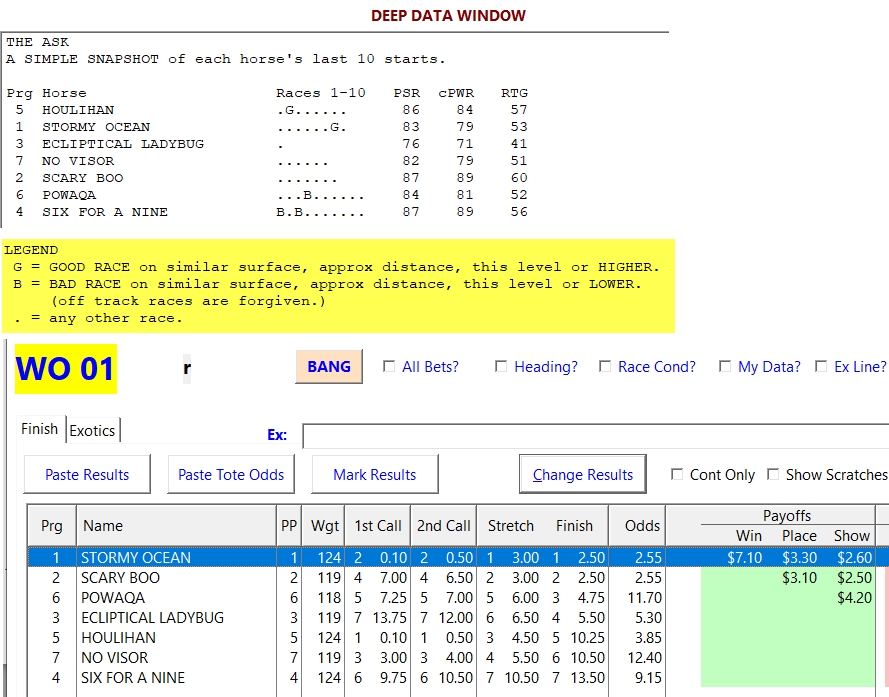Comments
-
pcr, pcr^, pcrHThey are different formulaic approaches to using PSR, CPW, RTG.
The formulas really don't matter, do they? -
I didn't win at Saratoga in 2025I think there were two very important takeaways:
1. No matter which approach we used, we had almost every race in our top 3, and usually top 2 horses.
That included a couple of $20+ horses and a whole bunch of exactas.
2. The quote you made: "I have never clicked any of the buttons you clicked tonight."
Saturday everyone will have the version Tony saw tonight. -
I didn't win at Saratoga in 2025Sorry that you are struggling.
Perhaps we should do a one-on-one and you can show me what you're doing.
Perhaps I can offer ideas for improvement. -
Why Vegas is Losing CustomersReno is hardly a gambling town any more.
But they have jacked the prices on everything.
LOL -
Morning Line Disastert's Belterra park!! what do you expect. somebody came along and placed a 500 win bet. :rofl: I remember one night I loved a horse at CT and the odds were 9/1. I bet 800 — Gillycapper
Great story.
Had a business partner about 30 years ago who went to a racetrack in Romania.
He and his wife had a dining room table, looking over the track.
He asked the server why all the people kept coming by staring at him. The waiter said that they wanted to get a look at the rich American who was making every horse the favorite.
He was betting $25 a race. -
How to bet "The Neal"Is it possible to determine the odds based on this information and would it be worthwhile?[/quote]
Great question.
The answer is "YES" and "NO."
Seriously ask the question at tonight's meeting.
It's right on topic with the direction. — Rick Irvin -
At the Window$
Love hearing this.
Thank you.
Yes, Brian/@ponyplayer has just accomplished some amazing things for us.
His research has pinpointed some very specific areas where we can now play with certainty.
Thanks to both of you.
Dave -
Jockey- Trainer statsThis is a great question.
It will take me 10 minutes to explain it or an hour to write an explanation.
Please bring this to Wednesday's meeting and I'll clear it up quickly for you. -
Working Groups to learn deTerminatorI’m making the jump to The DeTerminator. Looking forward to learning with you all. I’ve been an HSH user but work kept me from putting the time in. I’m now retired and going to put in the work to learn. — Rick Irvin
You now have access to the DET User's group.
Welcome aboard! -
ELO Based SystemWouldn't that severely limit your past history data to a very small sample size? — Tim Romero
Yes.
Which would you prefer... LESS and RIGHT or MORE but WRONG?
LOL - A well-known quandary for us data guys.
Is anyone around who can share about the 90% Confidence Interval stuff? -
deTERMINATOR v1.1190 is in your DropBox - make that v1.1191I added the ability to use different tie break factors for FTS and PrevStarters.
Get v1.1191.
We'll be demoing this one tonight. -
ELO Based System
In our system, we have something called "The Ask."
Just imagine that only the G and B races should really count.

-
ELO Based SystemWhat is an ELO system?? — ponyplayer
A relative rating system - think Chess Federation ratings.
(i.e. who you beat or lose to matters)
Dave Schwartz

Start FollowingSend a Message